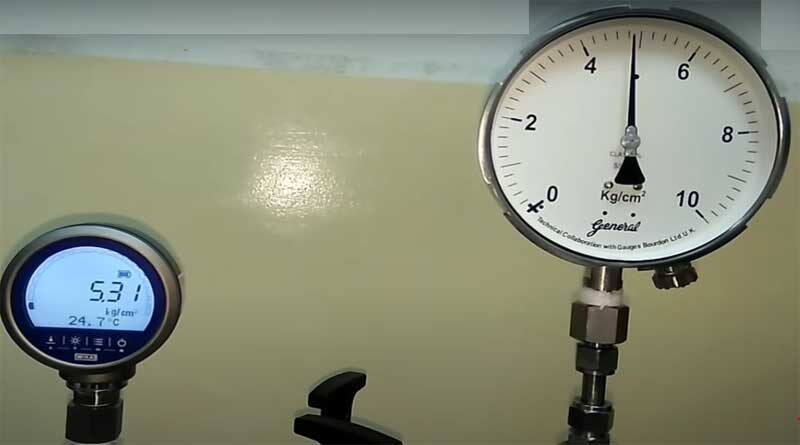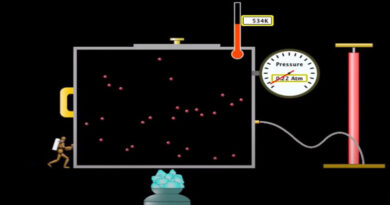Pressure Measurement, how to measure pressure?
| Devices for Pressure Measurement | Barometer | Aneroid Barometer | Siphon Barometer | Gauges |
The study of a force applied by a fluid (liquid or gas) on a surface calls pressure measurement. The most common unit of pressure measurement is force per unit of surface area to identify the pressure measurement. Many methods discover for measuring pressure and vacuum.
Pressure meters, pressure gauges, and vacuum gauges are devices that measure and show pressure in an integral unit. A manometer, for example, measures and indicates pressure by using the surface area and weight of a column of liquid.
Gauge pressure is equal to absolute pressure less atmospheric pressure since it is zero-reference against ambient air pressure.
The difference in pressure between two points calls differential pressure.
Differential pressure divides into two types: high vacuum and low vacuum.
The zero relation uses frequently indicate via context, and these phrases are just added for clarity. By convention, tire pressure and blood pressure are gauge pressures, whereas air, deep vacuum, and altimeter pressures must be absolute.
Absolute pressure is equal to gauge pressure plus atmospheric pressure since it is zero-reference against a complete vacuum on an absolute scale.
1. Devices for Pressure Measurement:
There are many devices to measure pressure.
- Barometer
- Gauges
1.1. Barometer of pressure Measurement:
A barometer is a device that measures atmospheric pressure in a certain area. A mercury barometer is a 1-meter-long glass tube device for pressure measurement. One end of the tube is closed. It totally filled with mercury and stored vertically in a mercury bowl. A small amount of mercury will fall into the bowl, creating a vacuum at the tube’s upper end.
Although, the atmospheric pressure applied to the level of mercury in the bowl will support a mercury section in the tube. Let h be the height of the mercury section in the tube above the section of mercury in the bowl.
At sea level, the mercury section is about 760 mm high.
760 mm of mercury in the range of atmospheric pressure at sea level.
Mercury vapors will be present in the space above the mercury in the tube.

Mercury is perfect for use in a barometer due to its high density and low vapor pressure. The height of the location and the weather conditions affect the measurement of the barometer. A barometer traditional assessment at a specific location only provides the local air pressure.
101.325 kPa is the international standard atmospheric pressure which is equal to 10.325 m of water or 760 mm of mercury.
1.1.1. The Aneroid Barometer of Pressure Measurement:
A powerful spring prevents a partially empty flute box from collapsing in this device. Pressure changes cause the front half of the box to bend inwards or outwards, allowing the spring’s pull to simply fight the force of the environment.

It increases the minor movements and uses to move a pointer on a calibrated scale.
1.1.2. The Siphon Barometer of Pressure Measurement:
Siphon Barometer use as a barometer in the home. A glass tube bent at the bottom to produce a U-tube in this gadget. The one end of the U-open tube is wide. The expanded portion of the siphon barometer is used in the place of a bowl or reservoir of a regular barometer. A small iron block holds partially by the up push of mercury on it and partly by a counterweight on the mercury surface.

A powerful spring prevents a partially empty flat box from collapsing in this device. Pressure changes cause the front half of the box to bend inwards or outwards, allowing the spring’s pull to simply fight the force of the environment.
1.2. Gauges for Pressure Measurement:
Similarly, the Bourdon gauge, which is arguably the most well-known form of gauge, is a mechanical device for measuring and displaying.
A vacuum gauge is a pressure gauge that measures pressures in negative values that are lower than the ambient air pressure. The vacuum gauge defines as the zero point. Although, most gauges use atmospheric pressure as the zero point. This kind of reading call “gauge pressure.”
Anything higher than total vacuum, on the other hand, is theoretically a sort of pressure. A gauge that employs total vacuum as the zero point and gives pressure readings in an absolute scale utilizes for very accurate measurements, particularly at very low pressures.
Sensors that can convey the pressure reading to a distant indication or control system are used in other types of pressure reading, which is known as telemetry.



